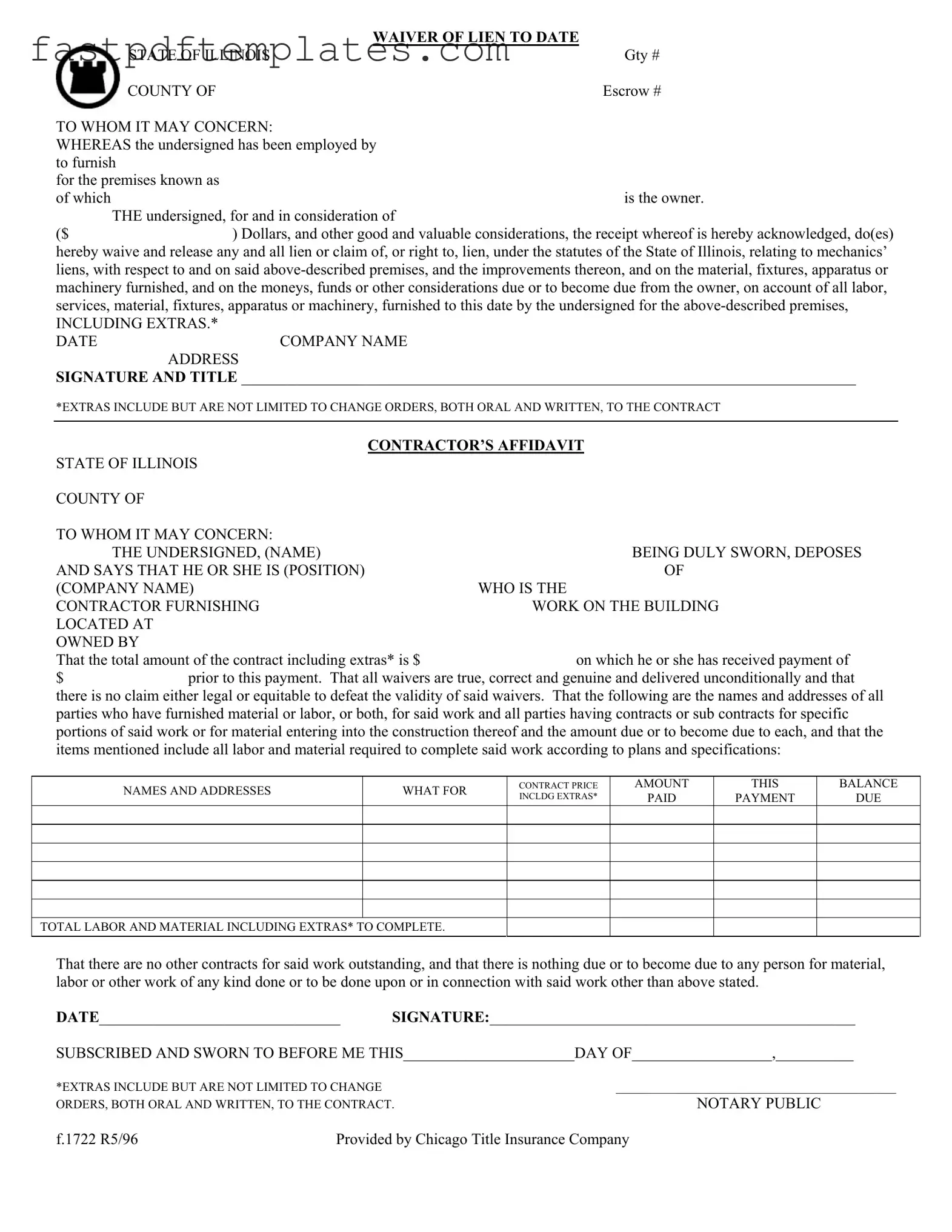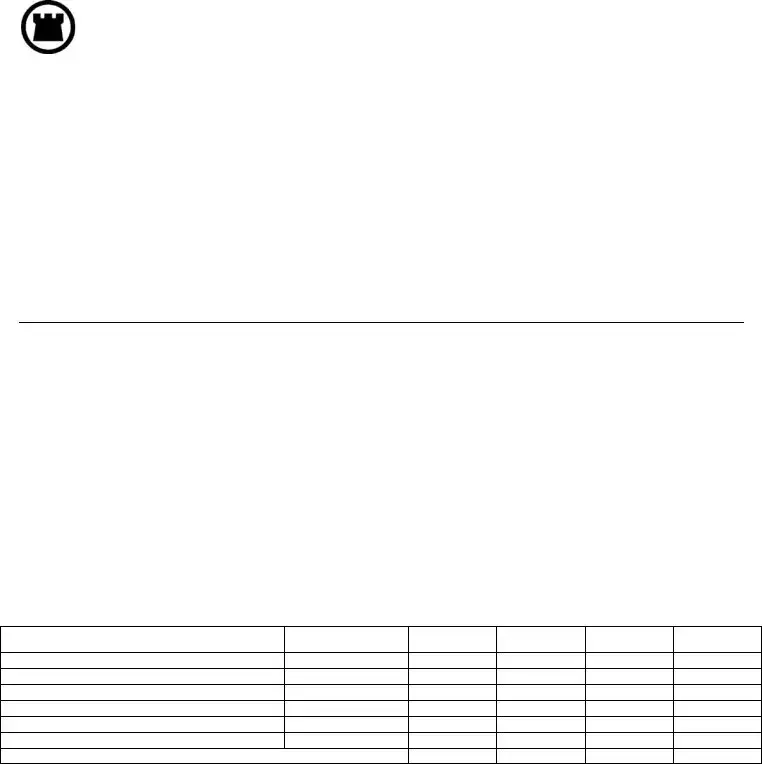The Chicago Title Waiver Format form is similar to a lien waiver, which is a document that a contractor or subcontractor provides to a property owner. Like the Chicago Title Waiver, a lien waiver releases any claim to a lien on the property for work completed. Both documents serve to assure the property owner that they will not face any future claims for payment related to the work performed. They are often used in construction projects to ensure that all parties are clear about payments and obligations.
Another document similar to the Chicago Title Waiver is a conditional waiver of lien. This type of waiver is provided before payment is made and becomes effective only upon receipt of that payment. Like the Chicago Title Waiver, it protects the property owner from potential claims. However, it is conditional, meaning that if payment is not received, the waiver is void. This adds a layer of security for both the contractor and the property owner.
A final lien waiver is the unconditional waiver of lien, which is executed after payment has been made. It confirms that the contractor has received payment and waives any future claims to a lien. This document is similar to the Chicago Title Waiver in that it ensures the property owner is free from future claims. However, it is unconditional, meaning that the contractor cannot later assert a lien for the work covered by the waiver.
The contractor's affidavit is another document that resembles the Chicago Title Waiver. This affidavit provides a sworn statement from the contractor regarding the work performed and payments received. Like the waiver, it assures the property owner that all obligations have been met. The affidavit also lists any subcontractors or suppliers involved, providing transparency about the project’s financial status.
A release of lien is also similar to the Chicago Title Waiver. This document is typically filed with the county clerk’s office and serves to formally remove any liens that may have been placed on the property. Like the waiver, it indicates that the contractor has been paid and has no further claims against the property. Both documents aim to clear the title and reassure the property owner.
The notice of completion is another related document. This notice is filed by the property owner to inform all parties involved that the construction project is finished. It is similar to the Chicago Title Waiver in that it can trigger the timeline for filing liens. By providing this notice, the property owner can help protect themselves from future claims by establishing a clear end date for the project.
The mechanics lien is a legal claim against a property for unpaid work or materials. While the Chicago Title Waiver releases such claims, the mechanics lien serves to establish them. Both documents are critical in the construction industry but serve opposite functions: one releases claims, while the other asserts them.
The payment application is another document that shares similarities with the Chicago Title Waiver. This application outlines the work completed and the amount due to the contractor. Like the waiver, it provides a snapshot of the project’s financial status. The payment application often accompanies the waiver, ensuring that the contractor is paid for the work completed up to that point.
Lastly, a subcontractor waiver is akin to the Chicago Title Waiver but specifically pertains to subcontractors. This document releases any lien claims that subcontractors may have against the property. Just as the Chicago Title Waiver assures the property owner of no future claims, the subcontractor waiver does the same for subcontractors involved in the project. Both documents work together to create a clear financial picture for the property owner.

